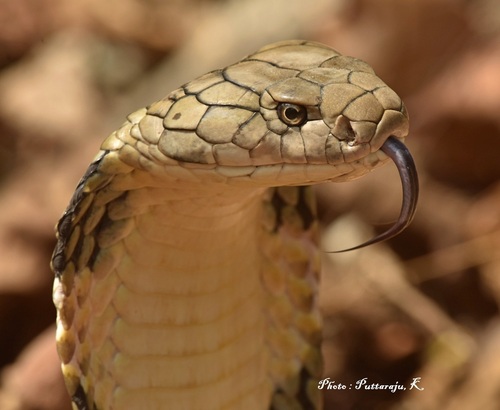
King Cobra
Majestic and menacing, the king cobra (Ophiophagus hannah) reigns as the longest venomous snake. Inhabiting Asian forests, it preys on other serpents, boasting a potent venom and iconic hood. Despite its fearsome reputation, it plays a vital role in controlling snake populations.
20 years
Lifespan
Brown, Yellow, Black, Green
Color
Low
Aggression
12 mph
Top Speed
Vulnerable
Conservation Status
Decreasing
Population Trend
Characteristics
The king cobra, Ophiophagus hannah, is the world's longest venomous snake, reaching up to 18 feet. Found in forests from India to Southeast Asia, it preys primarily on other snakes. Its distinctive hood and potent neurotoxic venom make it a formidable predator, yet it often avoids human contact.
Distribution Range of the King Cobra
Ophiophagus hannah, commonly known as the king cobra, is native to South and Southeast Asia. Its geographical distribution includes countries such as India, Bangladesh, Bhutan, Myanmar, Cambodia, Southern China, Laos, Malaysia, Indonesia, Nepal, the Philippines, Thailand, and Vietnam.
King Cobra's Habitat
Environmental Conditions
The king cobra typically inhabits a variety of environments ranging from dense highland forests to open plains. It is commonly found in tropical and subtropical rainforests, mangrove swamps, bamboo thickets, and agricultural areas. The species prefers humid environments with plenty of cover and is often found near water bodies.
Ecological Niche
As a top predator, the king cobra plays a crucial role in controlling the population of its prey, primarily consisting of other snakes, including venomous species. Its ecological niche extends to being an apex predator within its habitat, helping maintain the balance of the ecosystem by regulating prey populations. The king cobra is also known for its unique behavior of building nests for its eggs, which is uncommon among snakes.
Copyright @ Nature Style Limited. All Rights Reserved.
 English
English